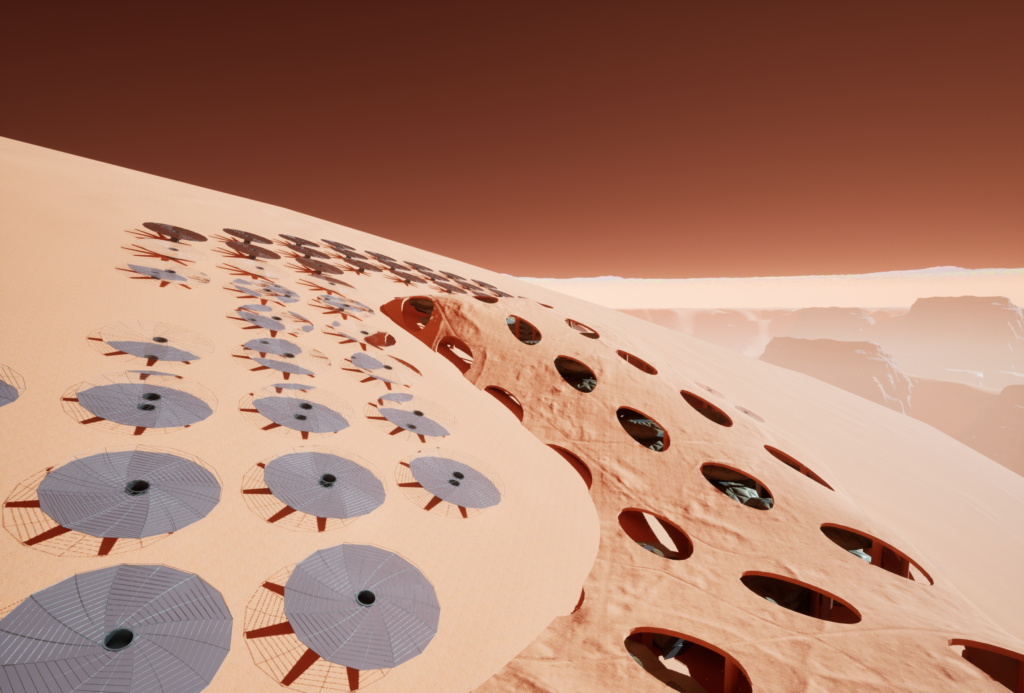
Solis Centrum Overview
Solis Centrum is a project for the BIMSC Studio class within the 2023/24 MaCAD program. This project aims to represent the solar center of the Aleph City community, a conceptual community on Mars located on the Valles Marines.
Location
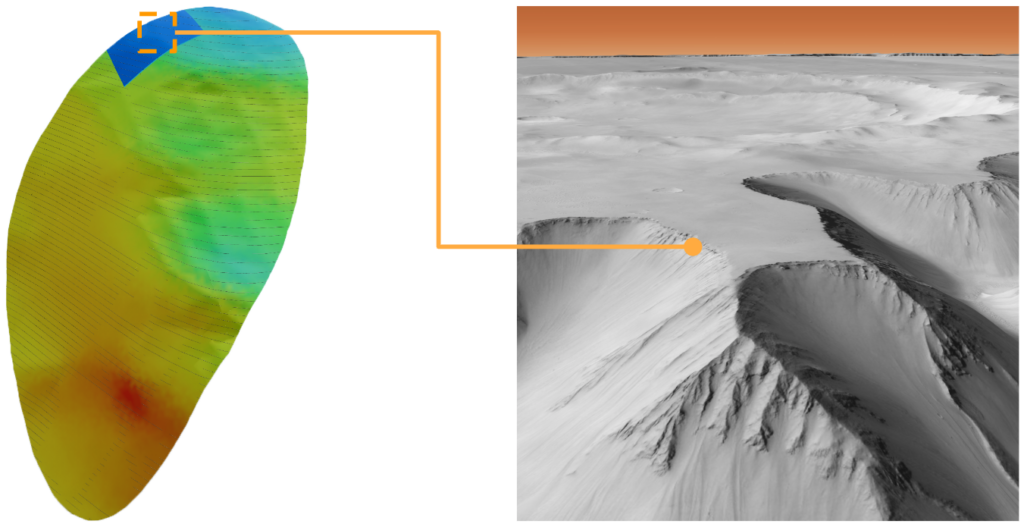
Solis Centrum is located along the northern mountain top of the Aleph City Macro Site. This location allows for maximized view of the valley below, as well as maximized solar gain for the energy harvesting process.
Programming

By providing residential, recreational, and energy harvesting facilities, Solis Centrum can not only provide places for occupants to live and work toward our goal of providing power to Aleph, but also provide opportunities for inhabitants to enjoy and make the most of their time within Aleph. By using an elevational approach, Solis Centrum rests atop the mountain overlooking the Valles Marines. Using a folding construction method and inflatable habitat interiors, two sizes of units are easily aggregated along the hillside and then partially covered by a series of protective shells to block out radiation. Outside of the shells are a series of solar collection units to power Solis Centrum and Aleph City.
Design Approach
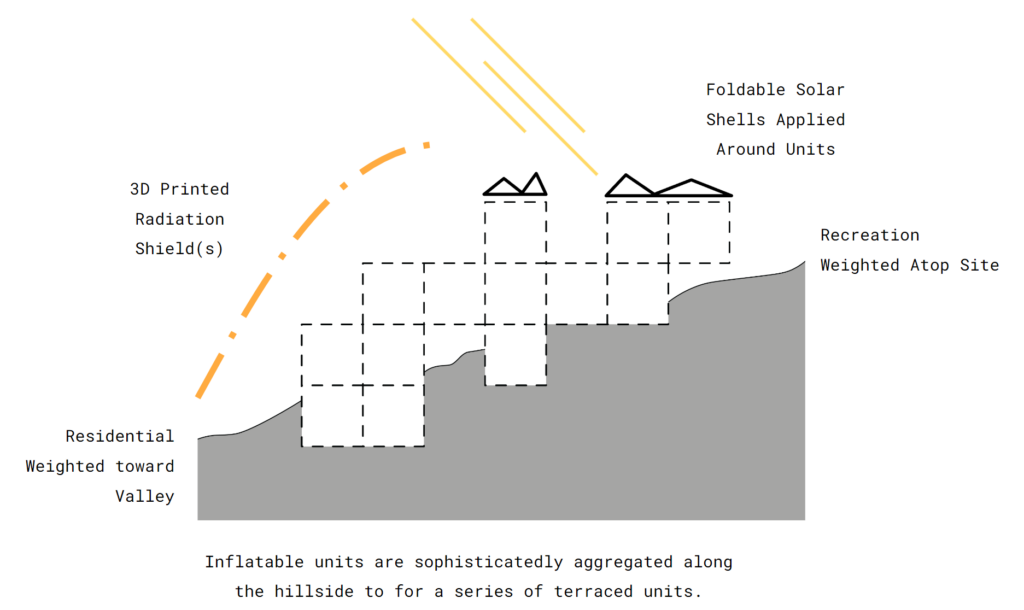
The design process for Solis Centrum is represented by the Parti Diagram shown above. Following an elevational approach, Solis Centrum is comprised of repeatable modules that have recreational units weighted toward the top of the site, while residential is down below. Connection units are populated between recreation and residential spaces with foldable solar collection modules placed in surrounding areas. Finally, a regolith shell is placed over a cluster of units for protection from radiation.
Rhino Geometry
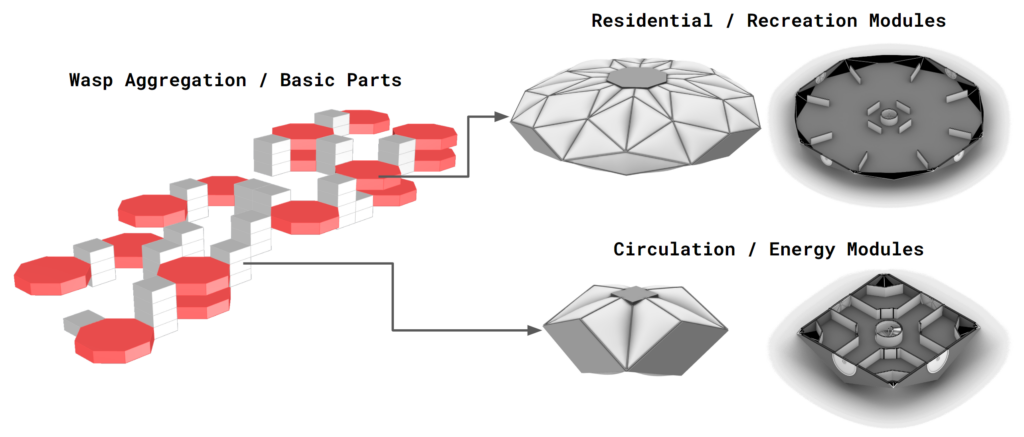
Concept Renders
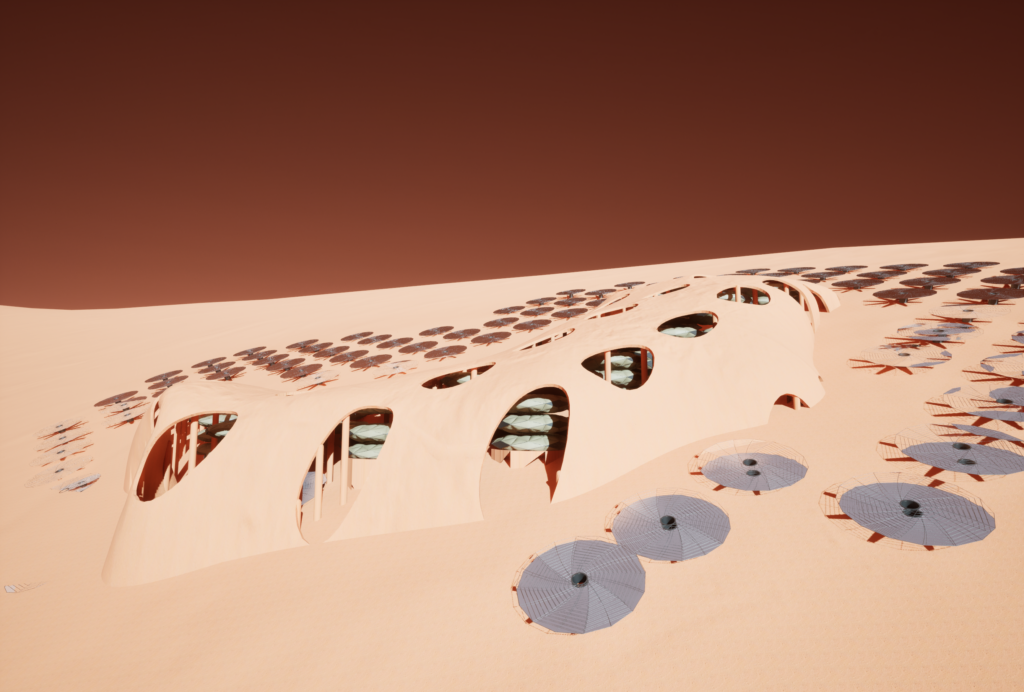
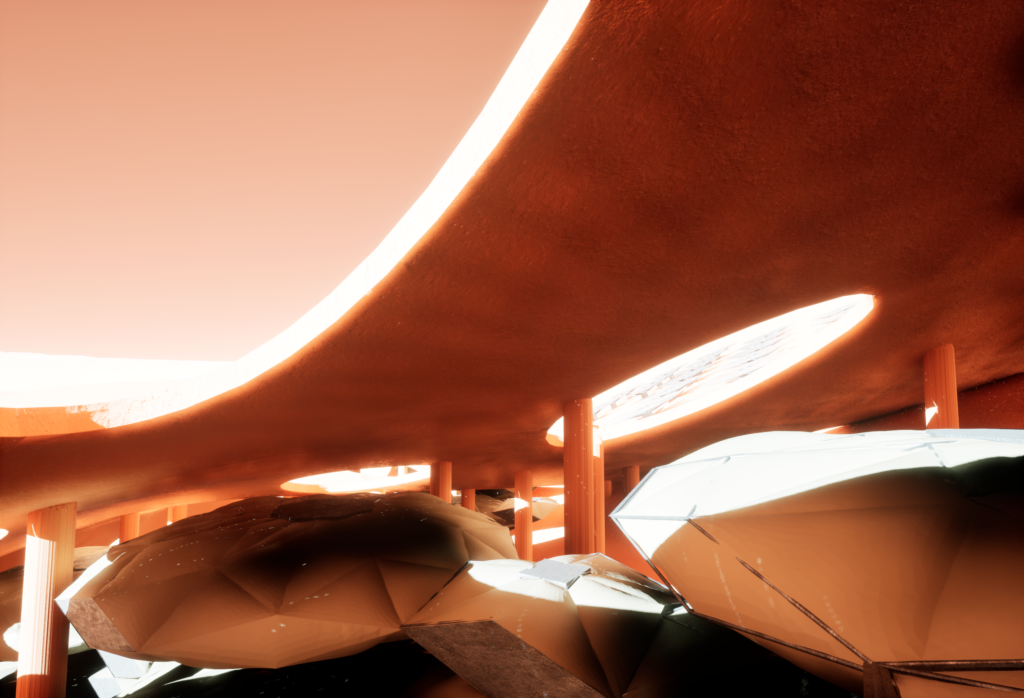
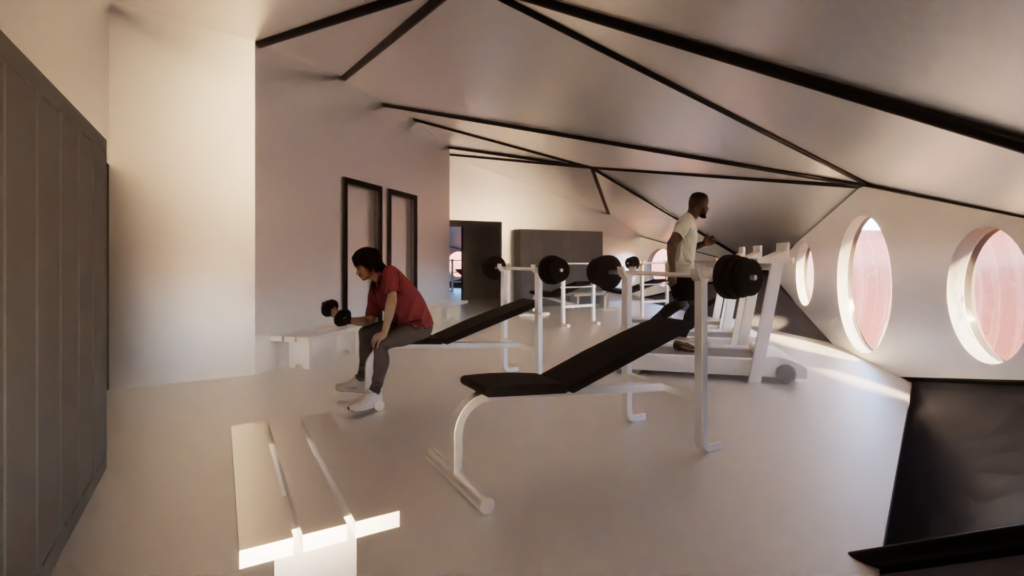
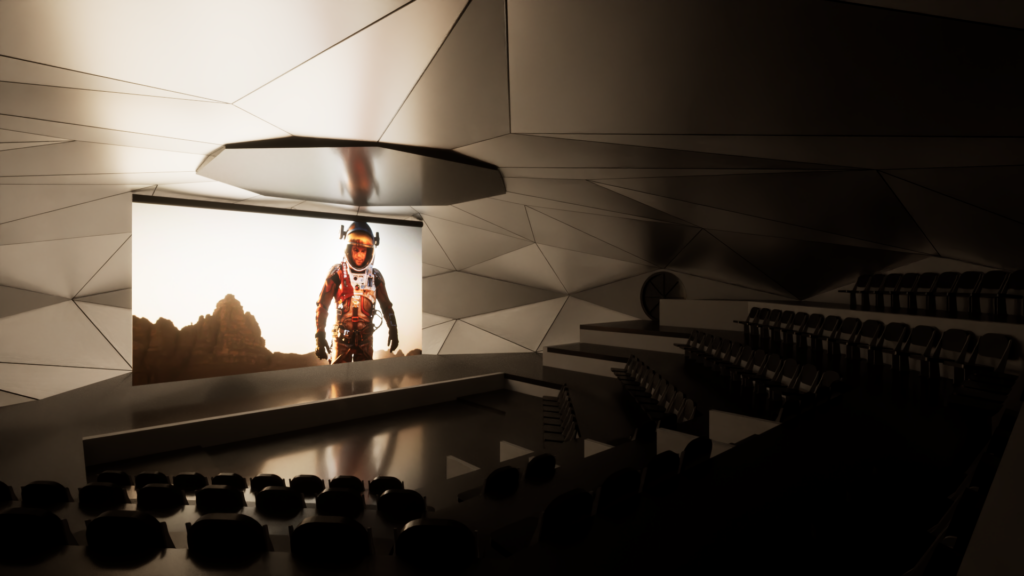
Workflow
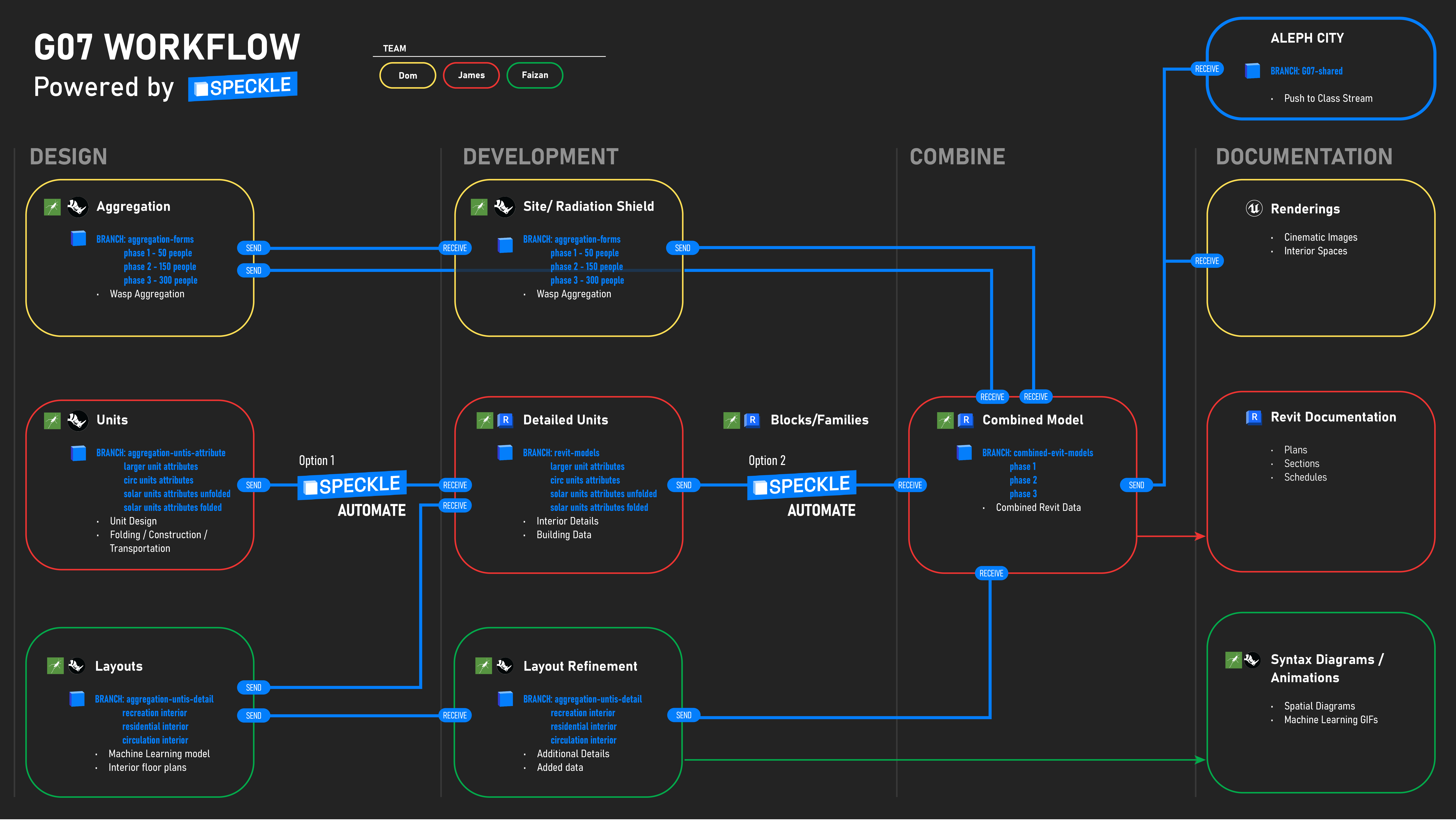
Speckle was the primary vessel of information between the designers. Each designer took on a different scale of the project, with Dom focusing on the large-scale overall aggregation and site, James focusing on the medium-scale unit geometry, and Faizan dealing with the small-scale interior layouts. Speckle’s ability to manage and curate data structures were vital in our pipeline of information from Rhino to Revit.
Rhino to Speckle

Shown above is the grasshopper definition responsible for the creating the unit geometry. After the script is run, the final data is packaged in a highly specific way to facilitate its use in Rhino.inside.
Speckle to Revit
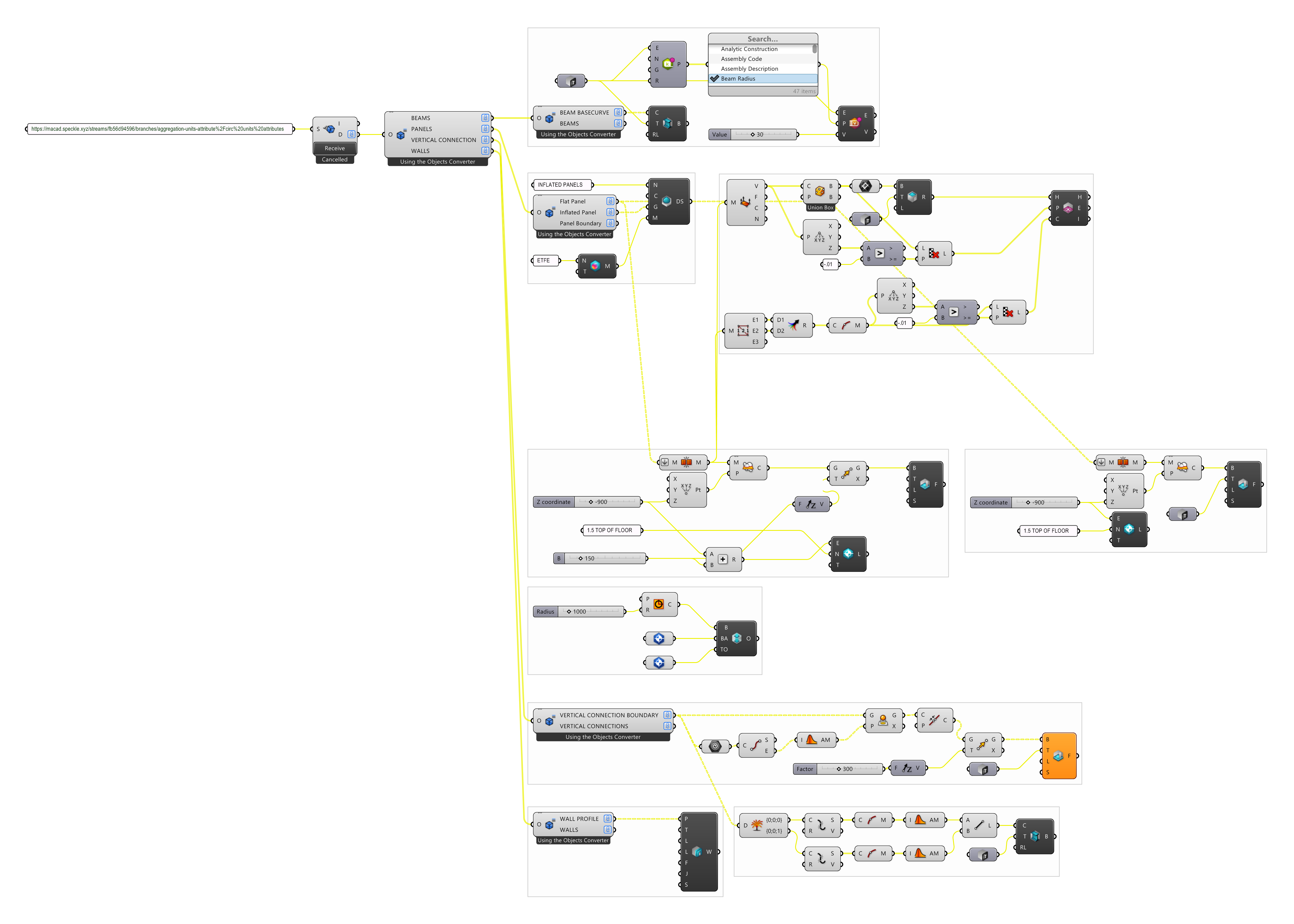
This definition shows the process of the packaged data being deconstructed and used to create the native Revit geometry. More detailed versions of the structural framing and panels workflow are depicted below:
Speckle Development
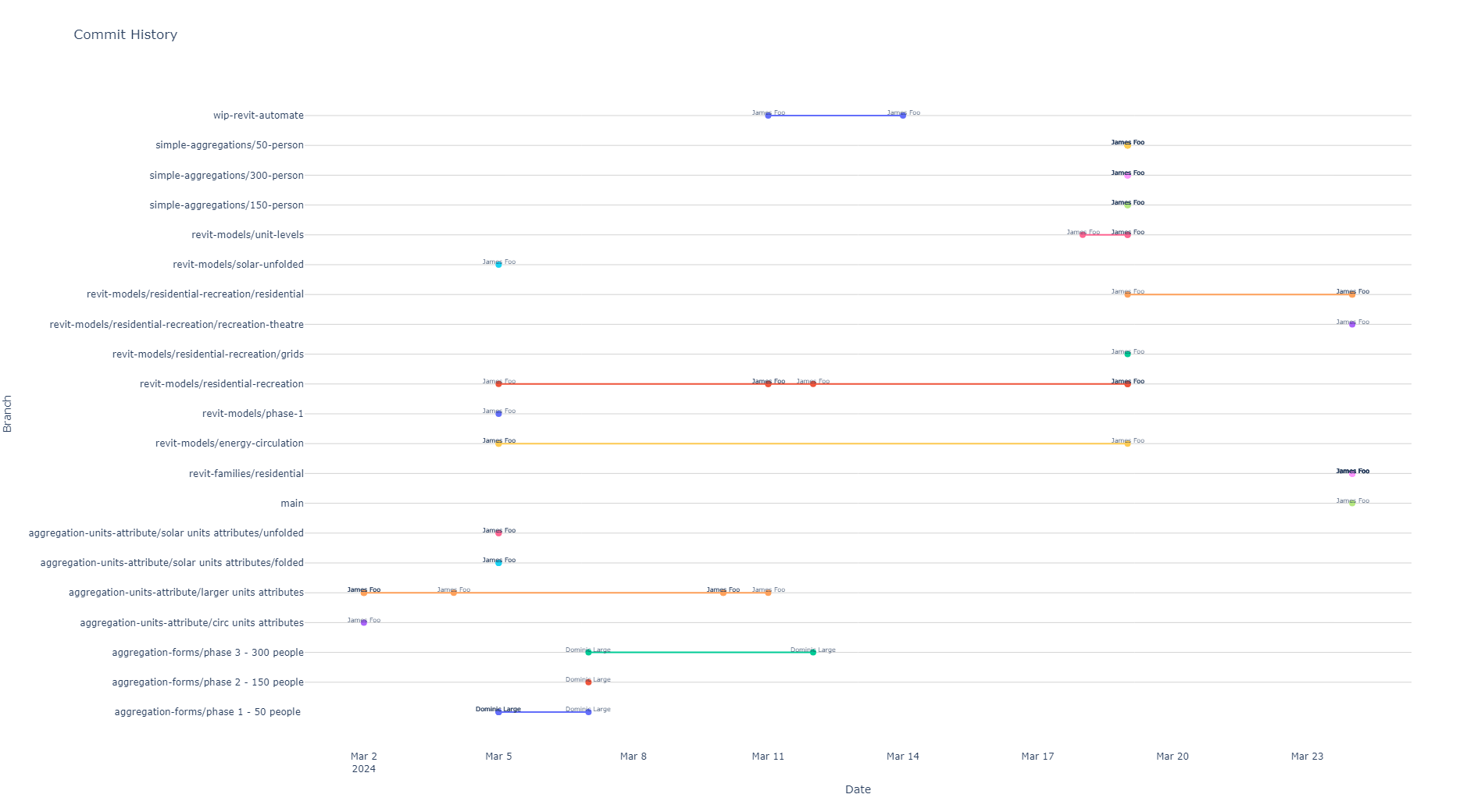
Automation
Through the use of Grasshopper, Speckle, Revit and Python, certain check points and processes throughout the design workflow presented themselves as opportunities for automated design. This freed up space for all group members to focus on pushing the design concept further, while not having to spent time repeating standardized operations.
Geometry Parsing

The grasshopper definition shown above was created to automate the process of placing geometry that represent mechanical and structural elements. Because these elements were designed to be modular, the automation process was simple to create, yet effective in saving large amounts of time completing this task that would typically be done by a group member for each module in the design.

Family Placing

In addition to automating the mechanical design assembly of these aggregated modules, the grasshopper definition shown above was created to then place specific units in to different families: Recreation, Residential, Horizontal Circulation, and Vertical Circulation. This saved time during the design process but also made BIM integration within Revit easier down the line.


